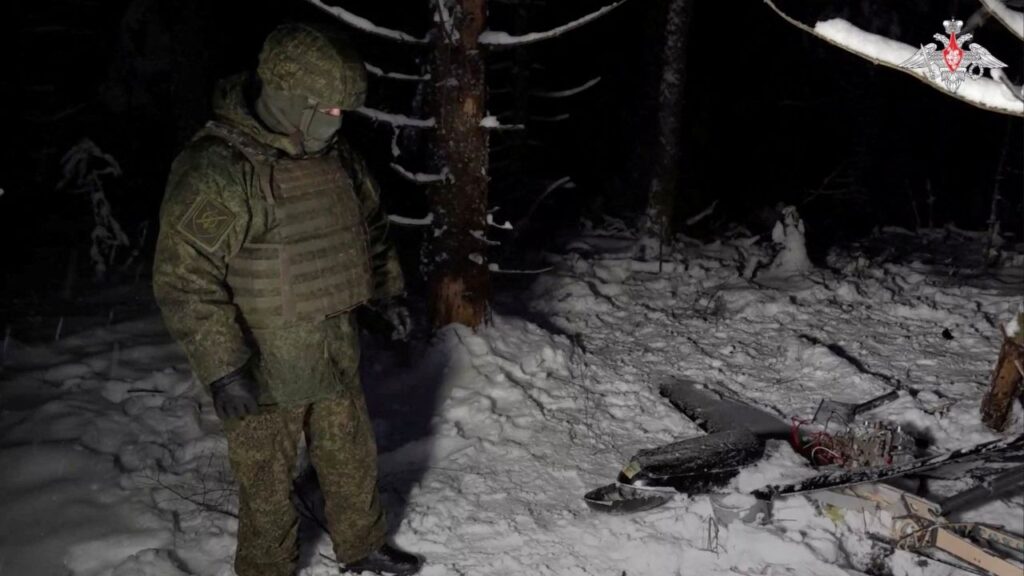Share
When Governor Gavin Newsom visited the Fresno County Fairgrounds on Feb. 10 he brought with him news of a new COVID-19 variant found in Southern California.
“We have the first reported cases of South African variants. Two cases have been reported through Stanford, one in Alameda County and one in Santa Clara County,” the governor said that day.
The irony is he made the announcement in what, so far, has been a variant-testing desert. To date, none of the variants announced by Newsom have been found in Fresno County.
For several weeks GV Wire℠ has asked Fresno County Interim Health Officer Dr. Rais Vohra what the county is doing to identify variants that may be present locally.
“I wish I had better news. I really haven’t received any notification,” Vohra answered during a teleconference with reporters on Tuesday. “I need to pressure my team to make sure that we are actually sending those samples up to the state.”

“I need to pressure my team to make sure that we are actually sending those samples up to the state.”–Fresno County Interim Health Officer Dr. Rais Vohra
Fresno County recently signed a memorandum of understanding with the state to run some pre-selected samples through the variant testing process at a state run lab.
“That’s on the top of my list of things to do this week,” said Vohra who added he won’t be surprised at all when the variant turns up locally.
Meanwhile, Butte County, with a population of just under 220,000 people recently found the more contagious B117 strain of the coronavirus. “We cannot let down our guard,” stated Dr. Robert Bernstein, Butte County Public Health Officer in a news release announcing the discovery on Monday.
California’s Genomic Sequencing Lab Network
In an early February story, CapRadio reported individual labs in California have been doing genomic sequencing on a small scale since the start of the pandemic.
As early as June, the California Department of Public Health began developing its statewide lab network, called COVIDNet. The goal was to choreograph the flow of specimen samples, track lab performance and manage communications between partners.
CapRadio further reported the lab network remains fragmented, and there isn’t substantial collaboration facilitated by the state, according to participants and observers. Critics also point out that the state’s new diagnostic laboratory in Valencia is not equipped for genomic sequencing.
CapRadio discovered the program months ago after reviewing state contracts related to coronavirus response. California enlisted McKinsey & Company, an international consulting firm, to help set up COVIDNet.
The contract, which also included consulting work on contact tracing and testing, carried a price tag of up to $1,850,000, which has since grown to up to $6 million.

CDC Role in Tracking Variants
Since November 2020, the CDC regularly receives SARS-CoV-2 samples from state health departments and other public health agencies for sequencing, further characterization, and evaluation. On January 25, 2021, the NS3 system was scaled-up to process 750 samples per week, according to the CDC’s website.
COVID-NET data, including hospitalization rates for different age groups and data on patient characteristics, are available on COVIDView.
COVID Samples Must Meet Certain Criteria For Variant Testing

“Just to give you an example, if we have one hundred positives, not all one hundred positives meet the state criteria to test for variant.”–Fresno County Community Health Division Manager Joe Prado
Fresno County Community Health Division Manager Joe Prado says the state lab guidelines are very rigorous when it comes to sending samples for COVID-19 variant testing.
“Just to give you an example, if we have one hundred positives, not all one hundred positives meet the state criteria to test for variant,” explained Prado. “The reason why they do that is because it’s very low probability that if it’s outside their criteria, it’s actually is a variant.”
On Monday, February 8, 2021, the CDC issued revised guidance on how they’ll accept SARS-CoV-2 positive samples. Some of the criteria include:
- Sequencing and virus culture success are limited by the quality of the specimen.
- Ideally, specimens should represent geographic, demographic (e.g., age), and clinical (e.g.,
disease severity or outcome) diversity from across the jurisdiction. This can be achieved
through random selection of specimens collected within the last 7 days. - Once collected, specimens can be stored at 2–8°C for no more than 72 hours. The 72-hour
timeframe is a strict requirement for sequencing to be completed. Prior to shipping,
specimens should be frozen at ≤ -70°C and shipped on dry ice
Other Counties Asking for Sampling
Vohra says many counties are making the same request as Fresno.
“Hopefully the state can as a whole can just start testing for variance and then give us information as they get it with the whole genome sequencing,” said Vohra.
Variants Are Looking a Little Less Scary
The New York Times reports the overall evidence on the impact of the variants on caseloads in parts of the U.S., so far, has been encouraging. And, vaccines are virtually eliminating hospitalizations and death in people who contract a variant.
In Florida, where B.1.1.7 has spread widely, “there’s no sign of any increase in cases,” Dr. Eric Topol of Scripps Research wrote. In South Africa, where the B.1.351 variant was first detected, cases are nonetheless plunging.
For unvaccinated people who contract the mutated virus, however, the risks appear greater. A study in the U.K. published on Wednesday found that the mutation is 30% to 100% more deadly than previous dominant variants.
[activecampaign form=25]We have a bellwether to know if the B.1.1.7 strain will hit the US—Florida. A week ago it was ~40% of the infections, so now it's clearly >50%, dominant. And there's no sign of any increase in cases. All good so far; keep 👀 on this! pic.twitter.com/svCmHbYRti
— Eric Topol (@EricTopol) March 9, 2021
Categories



















